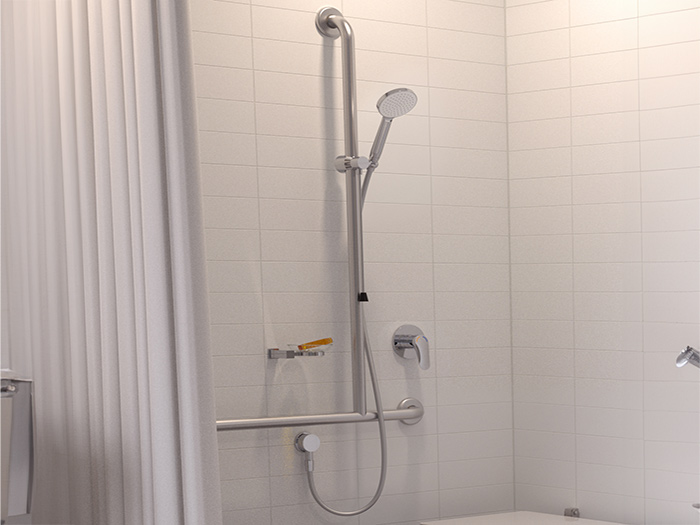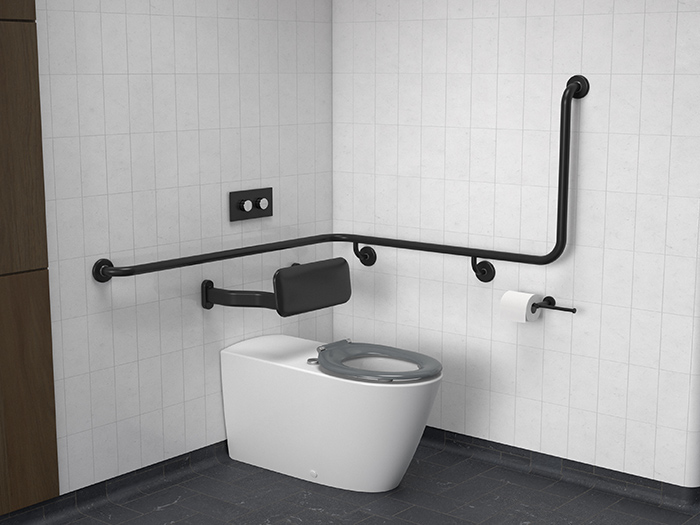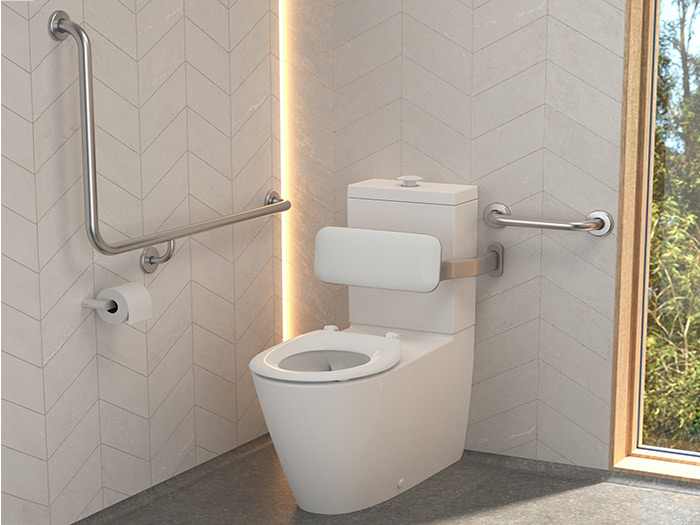In Australia, it is a legal requirement to have accessible bathrooms in commercial spaces. The Disability Discrimination Act 1992 (DDA) prohibits discrimination on the grounds of disability, including the provision of access to premises and facilities, and the AS1428.1 Standard provides minimum design requirements for new buildings to ensure spaces are accessible for people with mobility issues or disabilities.
Unfortunately, accessible bathrooms are often seen merely as a bureaucratic formality, rather than an opportunity to develop a more inclusive, engaging and welcoming built environment. That, in turn, can reinforce the stigma associated with accessible bathrooms and toilets, and have a detrimental effect on individuals who use these spaces by compounding feelings of exclusion and isolation. So, how can architects, designers and specifiers create accessible bathrooms that reach beyond the bare minimum set out by the building standards and promote genuine, thoughtful inclusivity?

There is no doubt that accessible bathrooms and standard bathrooms should have the same significance when it comes to design, and industry professionals could consider taking a more uniform approach across both types of spaces.
For instance, accessible bathrooms have traditionally felt institutional and austere, prioritising compliance and safety features over visual appeal. However, ample research demonstrates that aesthetically pleasing design can not only boost self-confidence and self-esteem, but it can also help improve general wellness and well-being, and make users feel more connected to their community.
In short, while adhering to AS1428.1 Design for access and mobility standard is most certainly non-negotiable, ensuring accessible bathrooms are visually pleasing is key to combating stigma associated with these historically neglected spaces. And so the onus is on designers and specifiers to practise inclusive and accessible bathroom design that is thoroughly considered and aesthetically pleasing, while still prioritising the relevant accessibility, safety and hygiene measures.
Integration of colour into these traditionally white spaces can help bridge the gap between a clean, compliant and functional interior, and an intentional, visually interesting space. Especially since LiveWell by Caroma expanded their signature Care Collection with two modern finishes – matte black and brushed nickel – giving designers a chance to adhere to the relevant standards, while challenging the status quo on what accessible bathrooms should look like.

The coveted Care Collection boasts a selection of meticulously manufactured bathroom fixtures that blend function and modern aesthetic in the bid to enhance the lives of all Australians. The range has been designed to provide multiple configurations to suit different spaces, layouts and user needs, while introducing discreet modifications that promote comfort, safety and independence. Importantly, Caroma ensures perfect colour-matching across all their collections and ranges, enabling designers to achieve consistency of finishes and designs across all the bathrooms in the building, and apply the same design language across accessible and standard bathrooms.

Now, these high-quality products, including grab rails, shower kits and seats, are available in a refined shade of matte black and a more gentle brushed nickel finish. The new additions complement LiveWell by Caroma’s traditional white and chrome bathroom staples, presenting designers with more dimension and flexibility when it comes to colour palette curation, without sacrificing hygiene control and the robustness of the core function of the product.
On top of that, the newly introduced finishes can help genuinely improve user experience. For instance, in contrast to the traditional white glossy finish, brushed nickel has a warm and inviting look and feel, which can make a bathroom feel more welcoming, and pleasant to use. What's more, specifying black bathroom products that create a more pronounced contrast between fixtures and white walls can be very helpful for those with impaired vision. Black matte finishes are also naturally better at concealing dirt or fingerprints – another vital factor in environments like bathrooms, and undoubtedly one of the reasons why matte black has been growing in popularity in commercial spaces overall.

The potential of these two finishes is further boosted by LiveWell by Caroma’s GermGard ®, an antimicrobial application which kills 99.9% of harmful bacteria. This feature is essential to effective hygiene control and has now been extended to LiveWell by Caroma’s sanitaryware, basins and grab rails. The thoughtfully designed rails boast a seamless, continuous design with no joints, which guarantees that there are no cracks for bacteria to breed.
These excellent features are backed by LiveWell by Caroma’s outstanding quality control. The brand ensures that all their locally designed and engineered products undergo strenuous tests that simulate real-life usage to guarantee utmost quality and ease of usability.
LiveWell by Caroma’s continuously evolving product offering reinforces the brand’s position as a true champion of accessible bathroom design – and further highlights their commitment to creating more inclusive and beautiful environments for all Australians. It also provides architects, designers and specifiers with a highly considered range of colourful bathroom fixtures that allow them to create compliant spaces with a sense of freedom and flexibility – and create inclusive, engaging and beautiful accessible bathrooms that are designed for living and built for life.

